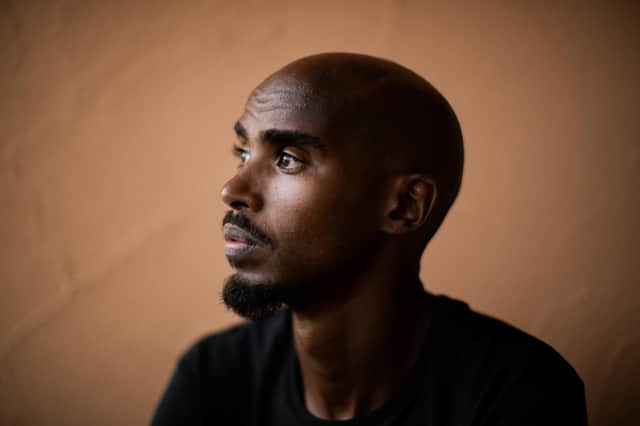As Mo Farah's heartbreaking story shows, modern-day slavery is all too real. So why the focus on pulling down statues? – Tom Wood


The presumption that most victims are women and girls destined for the sex trade is quite wrong. Many recent prosecutions have been for trafficking young men for forced labour.
At first glance, the young Mo was rescued from a life of poverty and brought to Britain for a better life. A cruel deception, of course, the false identity gave the clue.
Advertisement
Hide AdAdvertisement
Hide AdIn fact, he was trafficked to be a domestic servant, common in colonial days and still popular in some cultures. Later his status, fluid like many victims, changed when he was allowed the freedom to attend school.
There, it was the vigilance and perseverance of a teacher who asked the right questions that rescued young Mo. The rest is Olympic history.
It reminded me of a story I heard while researching a book about the sex industry. Paula is Romanian, in her early 30s, intelligent, articulate and confident. She and her boyfriend moved to the UK to escape the poverty of their homeland.
So far so good, but soon after arrival her boyfriend started to coerce her into lucrative escort work. A few months later, Paula’s life took a further turn for the worse when her erstwhile boyfriend decided to move on and sold her to an Albanian man in Edinburgh.
At this stage, her status changed to that of a trafficked person, and things were about to get worse. Transported to Edinburgh, her passport and documents were seized and, under threat of violence, she was detained in a locked flat along with three young local women who had recently left the care system. The four women, defacto slaves, were forced to have sex with numerous male callers, who paid their captor.
Like Sir Mo, these women were alone and without support in a hostile environment. And like Sir Mo, their salvation came in an unexpected way.
Two of the young women had a fight, and such was the commotion that the police were called. Two young constables called at the house but, too terrified to speak, the women said nothing.
Just like Sir Mo’s teacher, the officers persisted. Unhappy with the reassurances of the Albanian man, the police detained him and established he was wanted on a European arrest warrant. He was deported, the women freed.
Advertisement
Hide AdAdvertisement
Hide AdA routine piece of police work, done well, saved these women from slavery, and the officers concerned probably never knew how important their work had been.
In both these cases, the vigilance and decisive action of ordinary people freed the victims of real-world captivity.
How different from many current anti-slavery activists. Fixated by the Atlantic slave trade that ended 200 years ago, they pull down statues and daub paint. It’s easy, but changes nothing.
Confronting modern-day slavery is a lot harder and requires vigilance and action from us all. We must ask ourselves how the cheap clothes we buy are made, where the staff of nail bars come from and how much they are paid. Some sacrifices may be required. Turning up at a demo isn’t enough.
As the cases of Sir Mo and Paula prove, modern-day slavery is all around us, here and now.
Tom Wood is a writer and former police officer
Comments
Want to join the conversation? Please or to comment on this article.
